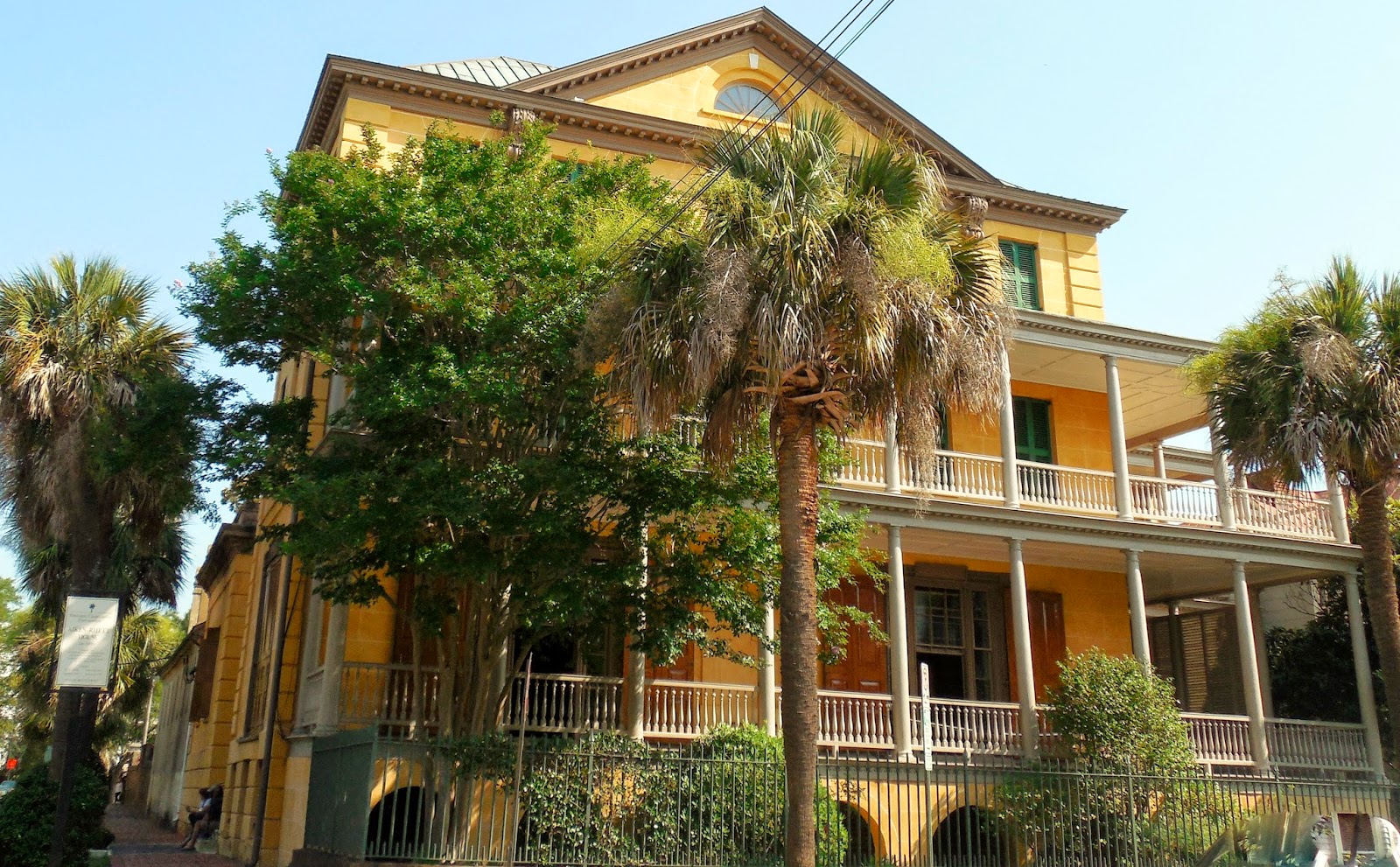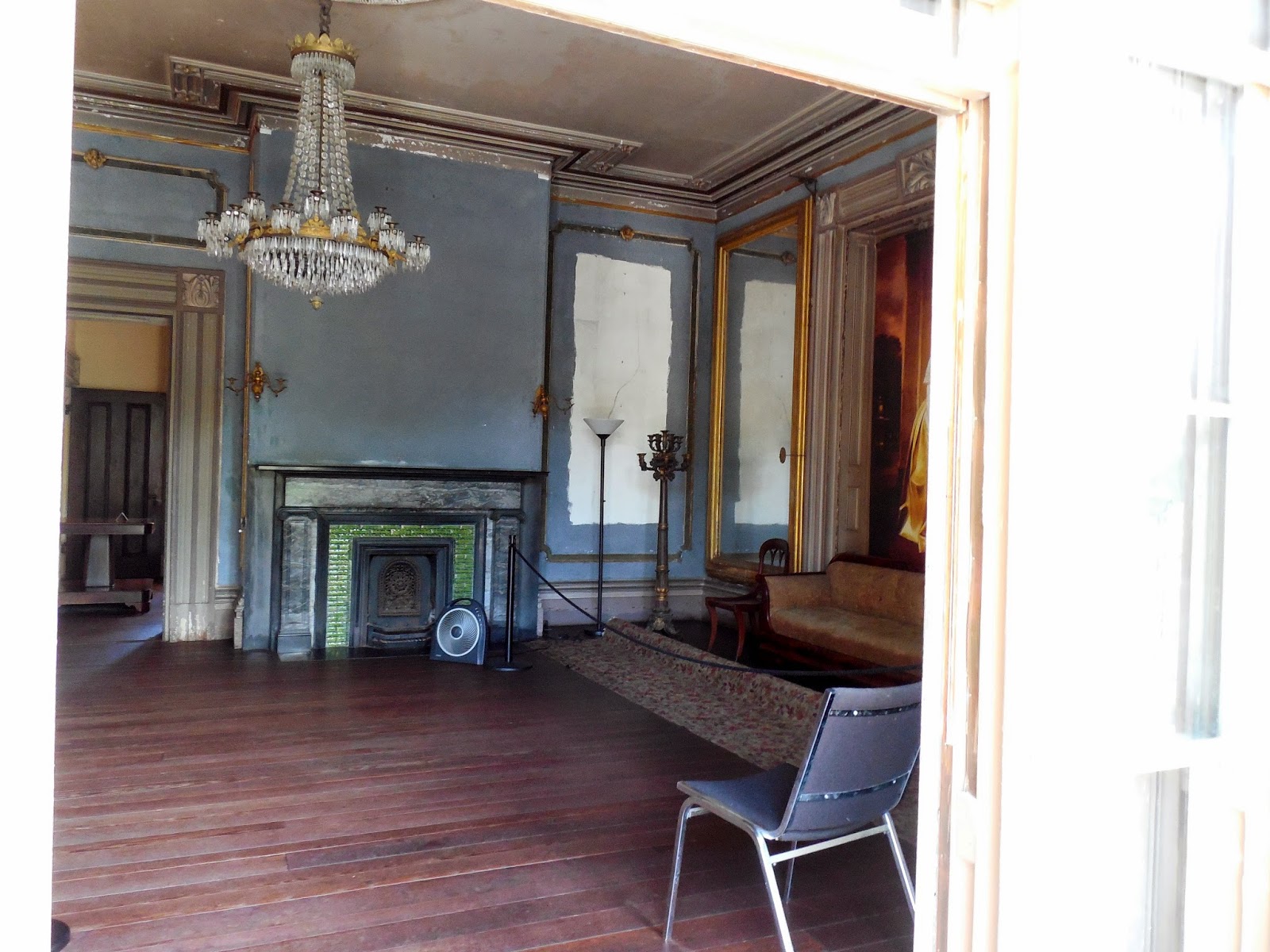In the outskirts of Charleston, along the Ashley River, are some of Charleston's surviving plantations. We saw two of the those open to the public today--Drayton Hall and Magnolia Plantation. Both of these plantations were owned by members of the Drayton Family.
Drayton Hall is believed to have been built between 1747-1752, and is one of the rare surviving plantation on the Ashley River. This plantation has survived the American Revolution, the Civil War, earthquakes, and hurricanes. The house is considered to be one of the best examples of Georgian Palladian in the U.S.
This house has an important place in American history, particularly during the Revolution. On March 23, 1780, Sir Henry Clinton, the British commander, made Drayton Hall his headquarters and several thousands of his troops encamped on the grounds. Six days later, these troops left Drayton Hall to march on Charleston itself. That summer General Cornwallis also made Drayton Hall his headquarters.
In addition, the house is one of only three along the Ashley River to survive the Civil War. Some evidence exists that it could have been used as a hospital during the war, which may explain why it survived.
(front of the house)
(back of the house, facing the Ashley River)
This plantation house, like the Aiken-Rhett House discussed
here, is preserved and not restored. In this house, however, the tour guide explained what preservation specifically meant for this house.
The walls are original to the house, including the beautiful moldings below, but the beautiful ceiling medallion in the picture above was added during the 1850s. Our guide explained that if the house had been restored, this beautiful ceiling would have been removed as not true to the house's original period of construction.
(Do you see the fox in the middle of the design over the fireplace?)
This room would have been used as the all purpose entertainment room. It could be the ballroom, the dining room, or whatever was needed. Off this room is the beautiful front porch overlooking the grounds.
We continued into the public entertainment rooms off to the side of the main large room. The first we entered has one of the oldest surviving original plaster ceilings in the U.S.
You can tell this room was another public room (where company would be entertained) due to the fancy ceiling and moldings.
The next "preservation vs. restoration" example came in the next room. The fireplace mantle in this room (believed to have been used as a library) shows two different styles: Georgian mixed with the new Federal Mantle.
Compare these elaborate fireplaces with the ones in the family rooms on the other side of the large main room--much more sedate with less fancy detail.
The lack of decorations or furniture made it difficult to envision how the rooms would have looked or how they would have been used. We were told that it is likely that one of the "family rooms" on the first level would have been a bedroom.
After we finished up the first level we headed up the carved wood stairway to the second floor.
The house had also been vandalized at points in its past (one example being the closet under the stairs).
The main entertainment room upstairs:
The upper level of the beautiful front porch:
The grounds at Drayton Hall were beautiful:
After leaving Drayton Hall, we went to see the Drayton Family's ancestral home, Magnolia Plantation. This plantation was founded by the Drayton family in 1676. It is one of the first public
gardens in the U.S., and was first opened to the public in 1870.
The house at Magnolia Plantation only dates to the late 1800s (the Reconstruction period). This was one of the plantations burned during the civil war, but this house was reconstructed to look like the house present in 1850.
We did not tour this house; instead, we spent our time here going through the expansive grounds after a quick stop for lunch--a pimento cheese sandwich! Very southern tea party.
First, we went through the swamp garden on the grounds, which were back towards the entrance to the plantation.
A boardwark skimmed along the top of the murky green covered water of the swamp and allowed us to be surrounded by the swamp for the first part of our walk.
The swamp was a great place to see some of the local wildlife.
After the swamp, we walked behind the house to catch the boat tour offered.
The tour guide explained how rice (one of the cash crops of South Carolina along with Indigo) was grown in the area using the brackish (part salt/part fresh) water of the Ashley River.
These grasses are meant to illustrate how rice (which is no longer grown here) would have looked when it was the major crop of the plantation.
The tour also touched on local wildlife, including blue heron
and alligators!
After the tour ended, we toured some of the formal gardens. Here are my favorite pictures of the grounds:
We sat for a bit and gazed across the lake at a beautiful white bridge,
before walking over to the entrance of the formal gardens.
We first entered the biblical garden,
and followed a path to our next surprise, a beautiful red bridge.
(my favorite picture from this day! I really loved this red bridge with flower boxes along it)
I found a great souvenir:
I loved that the teacup has a magnolia flower on it! This little ornament will look so cute on my tea tree at Christmastime.











































































